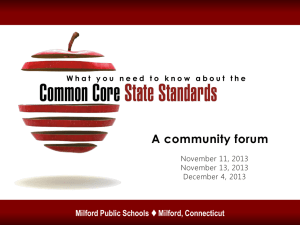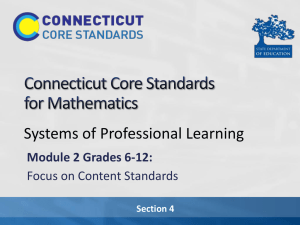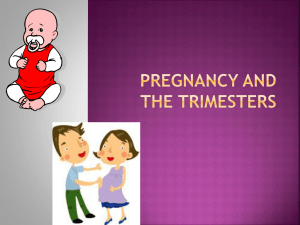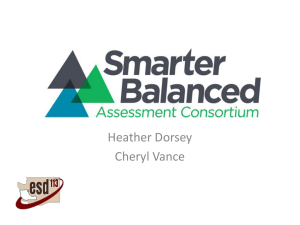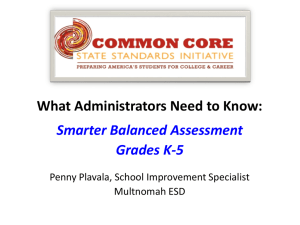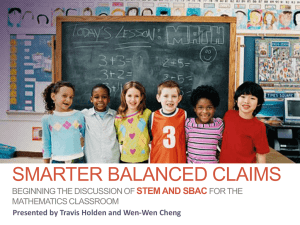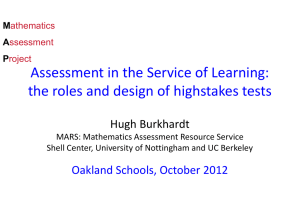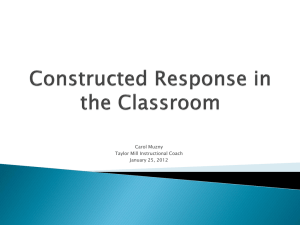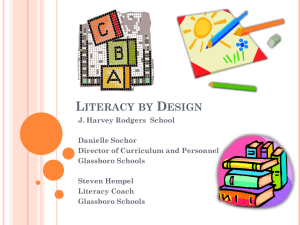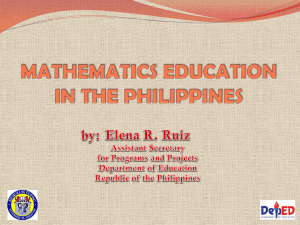SBAC Overview PowerPoint Presentation
advertisement
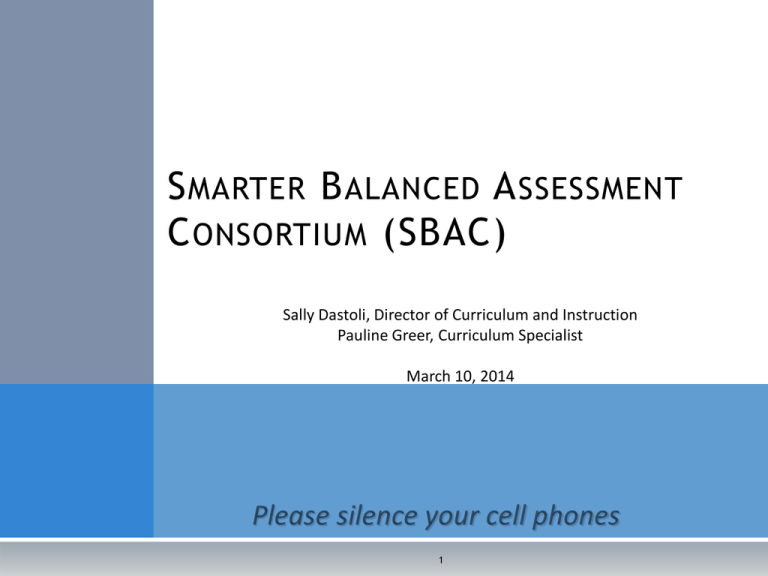
S MARTER B ALANCED A SSESSMENT C ONSORTIUM (SBAC) Sally Dastoli, Director of Curriculum and Instruction Pauline Greer, Curriculum Specialist March 10, 2014 1 2 C OMMON C ORE S TATE S TANDARDS CSBE adopted July 2010 3 4 Edweek July 17, 2013 N EXT G ENERATION A SSESSMENTS 5 Rigorous assessment of progress toward “college and career readiness” Consistent scoring across all Consortium states Valid, reliable, and fair for all students Administer online Use multiple measures A SSESSMENT S YSTEM C OMPONENTS 6 Assessment system that balances summative, interim, and formative components for ELA and mathematics: •Summative Assessment (Computer Adaptive) • Mandatory comprehensive assessment in grades 3–8 and 11 (testing window within the last 12 weeks of the instructional year) that supports accountability and measures growth • Selected response, short constructed response, extended constructed response, technology enhanced, and performance tasks •Interim Assessment (Computer Adaptive) • Optional comprehensive and content-cluster assessment • Learning progressions • Available for administration throughout the year • Item types: Selected response, short constructed response, extended constructed response, technology enhanced, and performance tasks •Formative Processes and Tools • Optional resources for improving instructional learning • Assessment literacy 7 W HAT IS CAT? Administered by computer, a Computerized Adaptive Test (CAT) dynamically adjusts to the trait level of each examinee as the test is being administered. Starting the spring 2015, the SBAC assessment will be adaptive within a grade level window. A8DVANTAGES OF CAT VERSUS C ONVENTIONAL T ESTS Reporting: Results can be made available more quickly (NOT for the Pilot spring 2014) Results available to CSDE in November 2014 Test Security/Item Exposure: All students are not presented with the same items More Flexibility for Computer Capacity: Students do not need to be assessed on the same schedule Score Reports for the Mathematics Summative Assessment Overall Claim for Grades 3-8 Overall Claim for Grade 11 Claim #1 - Concepts & Procedures “Students can demonstrate progress toward college and career readiness in mathematics.” “Students can demonstrate college and career readiness in mathematics.” “Students can explain and apply mathematical concepts and interpret and carry out mathematical procedures with precision and fluency.” Claim #2 - Problem Solving “Students can solve a range of complex well-posed problems in pure and applied mathematics, making productive use of knowledge and problem solving strategies.” Claim #3 - Communicating Reasoning “Students can clearly and precisely construct viable arguments to support their own reasoning and to critique the reasoning of others.” Claim #4 - Modeling and Data Analysis “Students can analyze complex, real-world scenarios and can construct and use mathematical models to interpret and solve problems.” 9 Score Reports for the ELA/Literacy Summative Assessment Overall Claim for Grades 3-8 “Students can demonstrate progress toward college and career readiness in English language arts and literacy.” Overall Claim for Grade 11 “Students can demonstrate college and career readiness in English language arts and literacy.” Claim #1 - Reading “Students can read closely and analytically to comprehend a range of increasingly complex literary and informational texts.” Claim #2 - Writing “Students can produce effective and well-grounded writing for a range of purposes and audiences.” Claim #3 - Listening “Students can employ effective listening skills for a range of purposes and audiences.” Claim #4 - Research/Inquiry “Students can engage in research and inquiry to investigate topics, and to analyze, integrate, and present information.” 10 Summative Assessments APPROXIMATE Testing Times Content Area Grades English language arts/Literacy Mathematics Combined Computer Required CAT PT Only Total In-Class Activity 3-5 1:30 2:00 3:30 0:30 4:00 6-8 1:30 2:00 3:30 0:30 4:00 11 2:00 2:00 4:00 0:30 4:30 3-5 1:30 1:00 2:30 0:30 3:00 6-8 2:00 1:00 3:00 0:30 3:30 11 2:00 1:30 3:30 0:30 4:00 3-5 3:00 3:00 6:00 1:00 7:00 6-8 3:30 3:00 6:30 1:00 7:30 11 4:00 3:30 7:30 1:00 8:30 The test duration estimates described above are applicable to most students. However, Smarter Balanced assessments are not timed tests. Some students may need more time while others may need less time to complete the assessment. Total 11 SBAC F IELD T EST SPRING 2014 12 On-line Practice Tests in Grades 3-8 and 11 in English language arts/literacy and mathematics: Provide an opportunity for teachers, students, parents, and other stakeholders to experience the features of on-line testing Gain insight into how Smarter Balanced will assess students’ application of CCSS skills and concepts. Provide a preview of the SBAC assessments, but they do NOT encompass the full range of content and should not be used to guide instructional decisions (unlike the operational assessments in 2015) SBAC F IELD T EST SPRINT 2014 13 Not Computer Adaptive (different forms piloted) Some schools may also pilot grades 9 & 10 We have a 3 week test window: Window 1: March 18 - April 4 – Silas Deane and WHS Window 3: April 28 - May 16 – all 5 elementary schools U NIVERSAL A CCESSIBILITY TOOLS 14 New Universal Accessibility tools available to all students, IEP, 504 and/or ELL students. NCSC – National Center and State Collaborative is developing new Alternate Assessment (to replace Skills Checklist) 15 Understanding the Range of Item Complexity Mike is using cubes that measure ½ inch on each side to fill a box that has a height of 5 ½ inches, width of 3 inches, and length of 2 ½ inches. How many ½ inch cubes will Mike need to fill the box? Mike is using cubes that measure ¼ inch on each side to fill a box that has a height of 5 ¼ inches, width of 3 inches, and length of 2 ½ inches. How many ¼ inch cubes will Mike need to fill the box? Mike is using cubes that measure ½ inch on each side to fill a box that has a height of 5 ¼ inches, width of 3 inches, and length of 2 ½ inches. How many ½ inch cubes will Mike need to fill the box? Content Standard: Grade 6.G.2 Practice Standards: MP.1; MP.5; MP.7 Response Types Smarter Balanced Response Types Selected Response Constructed Response MC with one correct response MC with multiple correct responses Two Part multiple-choice Matching Tables Yes/No or True/False Tables Fill-in Tables Select or order text or graphics Complex drag and drop Graphing Equation or numeric response Short Text Long Essay 16 Drag & Drop / Line Tool 17 Multiple Correct Response 18 Matching Table 19 Equation Writer Grade 3 20 Equation Writer Grade 8 21 Hot Spot 22 Hot Spot 23 Constructed Response 24 Multiple Parts 25 Two-Part Multiple Choice 26 Drag & Drop 27 Matching Tables 28 Constructed Response 29 Multiple Correct Response 30 Hot Text 31 Claim 3: Listening ... 21 Our World: Sleeping On-Board the Internat ional Space Station Select two questions that the listener can answer after listening to the presentation. List en to the pr esentation. Th en answer th e questions. A) How was the International Space Station bui lt? B) How far is the International Space Station from Earth? C) How long do astronauts stay in the International Space Station? D) What jobs do astronauts do on board the International Space Station? E) What time do astronauts go to sleep on the International Space Station? F) How do astronauts talk to family and friends back on Earth while on the International Space Station? 22 • Based on the presentation, select two things that can interrupt an astronaut' s sleep on the International Space Station. < > ·• - - - - - - - - - - - A) heat B) hunger C) lights D) noises E) work 32 Sample Grade 3 Performance Task Research Questions – Claim 4 33 Sample Grade 3 Performance Task Full Write – Claim 2 34 P REPARING 35 FOR SBAC “Test prep” is embedded in instruction Create instructional activities that encourage high levels of student engagement. Expose students to multiple resources- both print and digital. Enable students to extract information from text and make inferences based on this information. Provide opportunities for ongoing, short research projects. Provide students with rich experiences that require them to persevere and apply skills and concepts in order to solve high level problems. Provide students with opportunities to justify or defend their answers. 36 S AMPLE SBAC I TEMS http://www.smarterbalanced.org/sample-items-andperformance-tasks/
